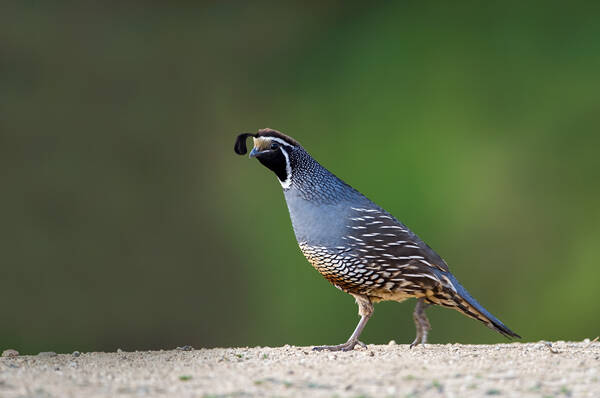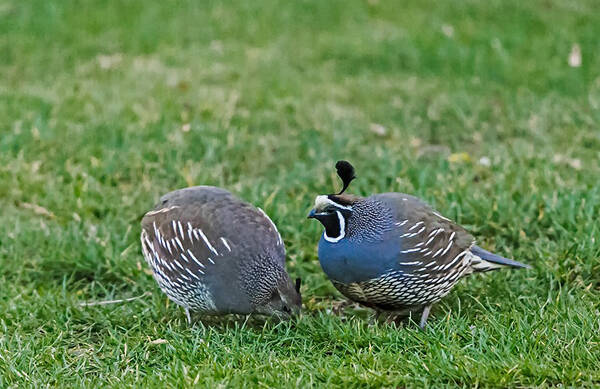Callipepla californica
IUCN
LCBasic Information
Scientific classification
- name:Callipepla californica
- Scientific Name:Callipepla californica,California Quail
- Outline:Landfowl
- Family:Gallinorhynchia Ornithidae Ornithidae
Vital signs
- length:25-30CM
- Weight:200-300g
- lifetime:No textual research information is available
Feature
It was plump and stocky, with a black curving crown on its forehead
Distribution and Habitat
Country of origin: Canada, Mexico, USA. Introduced: Argentina, Australia, Chile, New Zealand.
Preferring to live on grasslands, foothills, woodlands, canyons and the edges of deserts, this bird can survive in almost any environment given the right conditions. In the morning and evening, it is often active in the larger forest clearing, forest edge and sunny slope grass or brush, and other time it is active in the forest beside the fallen wood, shrubland or open space in the grass.
Appearance
The beaded quail is 25-30 cm long and has a wingspan of 38-43 cm. In general, they have a distinctive black and white pattern on the cheeks, are cute, plump and stocky, have grayish white and brown plumage, and the most distinctive feature is a curved teardrop black crest on their foreheads. Sex is dimorphic, male throat black, chest, abdomen, back and wings brown mixed with black and brown; The female's throat gray has more black stripes, and the head and back are brownish and spotted. The body feathers of the male subadult bird are mostly gray and brown, giving it a hidden appearance. The beak is black and the legs are gray. There are 8 subspecies with slightly different body characteristics.
Details
Callipepla californica (California Quail) has eight subspecies.

The quails feed on green plants and insects on the ground, and are highly clustered. Although they have strong flying ability, they mostly walk or run, and nest in the shelter of low branches. It likes to eat plants, seeds, insects and other things, usually in the early morning. Because of its strong growth capacity, it can also be cultured in captivity.

The breeding season is April to June, when the males will stand in the trees and call to attract females, and many males will often fight for a female mate. After mating, the female lays eggs with brown spots, which begin to hatch. After about three weeks of incubation, the baby quails are born, and the couple takes turns raising their young. The little quail grows quickly and can practice flying within 10 days of breaking its shell. They will stay on the ground for about a month before moving into the trees. Females usually produce one clutch of eggs a year.
Listed on the International Union for Conservation of Nature (IUCN) 2016 Red List of Threatened Species ver 3.1 - Not Threatened (LC).
Protect wild animals and eliminate wild meat.
Maintaining ecological balance is everyone's responsibility!








